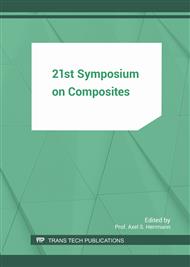p.173
p.181
p.189
p.197
p.205
p.215
p.223
p.231
p.238
The Development of Lead-Free Sliding Contacts Based on Bronze-Graphite Composites through Powder Injection Moulding
Abstract:
Sliding electrical contacts are traditionally produced by conventional compacting technologies. Employing the powder injection moulding process (PIM) as a new manufacturing method can offer several advantages such as the fabrication of complex net-shaped parts, cost-effectiveness and high volume productions. The PIM process route consists of the following steps: powder processing, compounding, injection molding, debinding and sintering. A two-stage process consisting of solvent debinding and thermal debinding is often used to remove the moulding binder. In the present paper, the suitability of the powder metallurgical processes: mechanical alloying and powder mixing for the preparation of bronze-graphite powder mixtures for the compounding and injection moulding of sliding contacts is discussed. The use of a suitable binder is of central importance for the preparation of injection-moldable feedstocks. For this purpose, two commercial ready-to-use binder systems were utilized and evaluated. The essential challenge of the process route is to optimize all parameters of the subprocesses to achieve a damage-free debinding and sintering of the injection-moulded parts. First results on the influence of the graphite content, the binder fraction, the debinding and sintering parameters are presented and discussed.
Info:
Periodical:
Pages:
205-212
Citation:
Online since:
July 2017
Authors:
Price:
Сopyright:
© 2017 Trans Tech Publications Ltd. All Rights Reserved
Share:
Citation:


